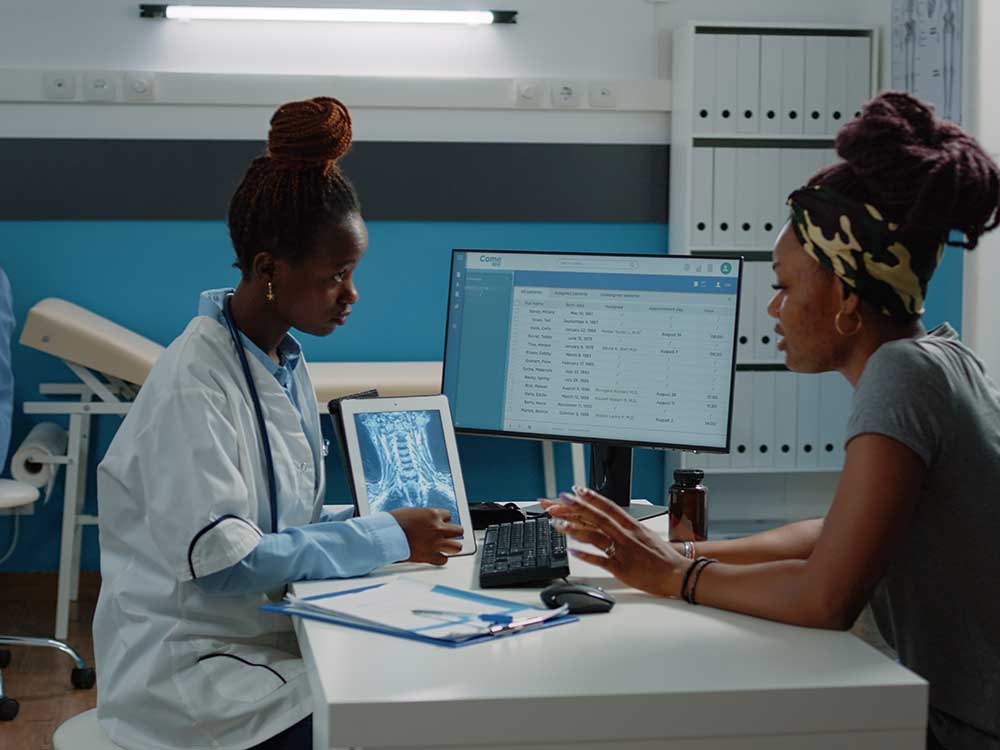The Future of Medical Administration: Fads and Advancements to Watch
The Future of Medical Administration: Fads and Advancements to Watch
Blog Article
Ideal Practices in Medical Administration for Improving Effectiveness and Minimizing Expenses
In the ever-evolving landscape of healthcare, the quest of finest methods in medical management is paramount for boosting performance and suppressing costs. By integrating advanced innovations such as digital health documents and telemedicine, medical care carriers can enhance procedures and enhance individual care.
Leveraging Advanced Modern Technology
In today's swiftly progressing medical care landscape, leveraging sophisticated technology is no more optional but important for effective clinical management. The combination of digital services right into medical care systems has actually transformed the way facilities run, streamlining procedures and boosting individual treatment. Electronic Wellness Records (EHRs) are critical, providing comprehensive client information that can be accessed promptly by licensed workers, thus reducing redundancy and reducing errors. By systematizing person details, EHRs remove the demand for cumbersome documents and help with smooth communication amongst health care carriers.
Telemedicine is an additional technological advancement that has actually transformed individual communication. It uses benefit for both clients and health care experts by allowing remote examinations, which can minimize the requirement for in-person check outs and enhance consultation scheduling. Additionally, telehealth platforms can expand medical care accessibility to country or underserved locations, linking voids in treatment delivery.
Moreover, the usage of Expert system (AI) and maker discovering is coming to be progressively common in predictive analytics, enabling early discovery of possible wellness issues and even more educated decision-making. These innovations, when incorporated efficiently, can enhance analysis precision and individualize individual treatment plans, ultimately resulting in boosted health care end results and operational efficiency.
Optimizing Source Allowance
By purposefully handling resources such as workers, tools, and finances, medical care facilities can considerably boost their functional efficiency, improve patient outcomes, and reduce unneeded expenses. The very first action in optimizing resource appropriation entails performing a thorough analysis of present assets and identifying locations where resources may be underutilized or exhausted.
Prioritizing source allocation based on person demands and service needs is crucial. This includes aligning sources with high-demand areas, such as emergency situation care or specialized therapies, to guarantee prompt and efficient person care. Implementing flexible staffing versions can likewise enhance labor resources by changing personnel allotment in response to rising and fall individual quantities. Additionally, welcoming telemedicine and other technological solutions can alleviate physical source restrictions by using alternate methods for patient-provider communications.
Funds should be carefully kept an eye on and allocated with critical insight to support both short-term functional requirements and long-lasting institutional goals. This includes investing in training programs that improve personnel expertises and adopting energy-efficient methods that decrease operational costs (medical administration). Inevitably, an enhanced resource appropriation approach cultivates a sustainable healthcare environment that is responsive, effective, and financially sensible
Streamlining Process Procedures
When health care facilities objective to improve functional effectiveness, enhancing process processes comes to be a pivotal emphasis. Reliable workflows reduce redundancy, get rid of unnecessary steps, and improve control among health care professionals. This approach not just increases solution shipment but additionally improves the top quality of client treatment.

Following, innovation assimilation plays a significant function in simplifying workflows. Applying electronic health and wellness records (EHRs) and digital doctor order entrance (CPOE) systems reduces documentation, lessens human mistake, and makes sure details comes to all appropriate personnel. Furthermore, leveraging telemedicine platforms can simplify individual assessments and follow-ups, lowering the pressure on physical infrastructure.

Ultimately, streamlined process bring about cost decreases and improved patient contentment, cultivating a much more sustainable healthcare setting.
Enhancing Information Monitoring
Building upon structured process, Recommended Reading enhancing information management comes to be an essential part beforehand medical care administration. Effective information management systems are critical for maintaining precise patient records, improving decision-making, and making certain conformity with governing criteria. By implementing robust data monitoring solutions, healthcare centers can improve the quality of person care while simultaneously lowering operational expenses.
One trick aspect of improving information administration is the assimilation of advanced digital wellness document (EHR) systems. These systems facilitate the seamless exchange of patient information throughout various departments, minimizing replication of tests and minimizing mistakes. A properly designed EHR system sustains data analytics, making it possible for medical care providers to recognize patterns and make notified choices regarding client treatment.
Furthermore, guarding client information is vital. Embracing detailed cybersecurity steps, consisting of security and routine audits, makes certain the honesty and privacy of delicate details. This not just shields patients but additionally maintains the establishment's online reputation.
Buying staff training is another essential variable. Enlightening healthcare professionals on information monitoring techniques improves their ability to successfully make use of modern technology, causing enhanced person results. Finally, boosting data administration with sophisticated innovation and detailed training is crucial for accomplishing efficiency and cost reduction in clinical management.
Fostering Collaborative Communication
An essential component beforehand clinical management is cultivating joint interaction amongst health care professionals. Effective interaction is critical for guaranteeing seamless client care, optimizing therapy outcomes, and reducing errors. By encouraging open discussion and coordination throughout multidisciplinary groups, healthcare organizations can improve their functional performance and reduce unnecessary prices.
Central to this strategy is the assimilation of communication modern technologies such as electronic wellness documents (EHRs) and secure messaging platforms, which facilitate the fast exchange of vital person info. These tools make it possible for doctor to accessibility and share data in real time, making sure that all group participants are educated and lined up in their decision-making procedures. Regular team meetings and interdisciplinary rounds can even more promote a culture of cooperation and responsibility.
Educating programs concentrated on improving communication skills are also vital. These programs can help team establish the capability to convey info plainly and listen proactively, hence decreasing misunderstandings and fostering a supportive job environment. Furthermore, taking on standardized interaction protocols, such as SBAR (Scenario, History, Evaluation, Suggestion), can improve the exchange of information, making sure that vital information are communicated succinctly and efficiently. Eventually, cultivating joint interaction results in boosted health care delivery and expense financial savings (medical administration).

Conclusion
Including sophisticated innovation, such as digital wellness documents and telemedicine, alongside optimized find out here now source appropriation and streamlined workflow procedures, is crucial for boosting effectiveness in clinical management. Efficient data administration and fostering collective communication amongst health care teams are important for lessening redundancies and boosting treatment high quality. By focusing on precautionary treatment and participating in high quality improvement campaigns, healthcare check my reference organizations can attain substantial expense savings and boosted client results, therefore making certain sustainable healthcare shipment in a progressively complicated setting.
Report this page